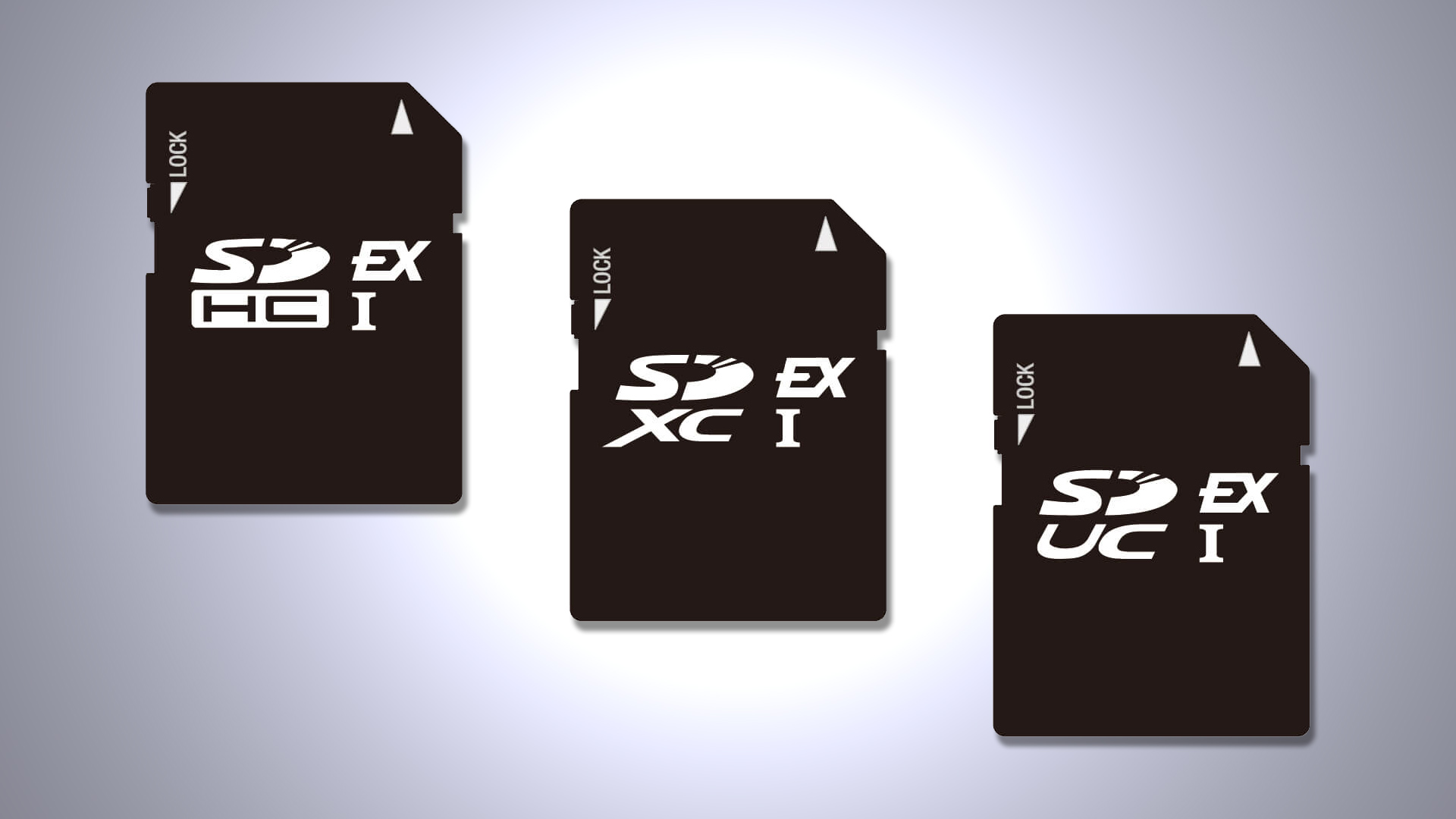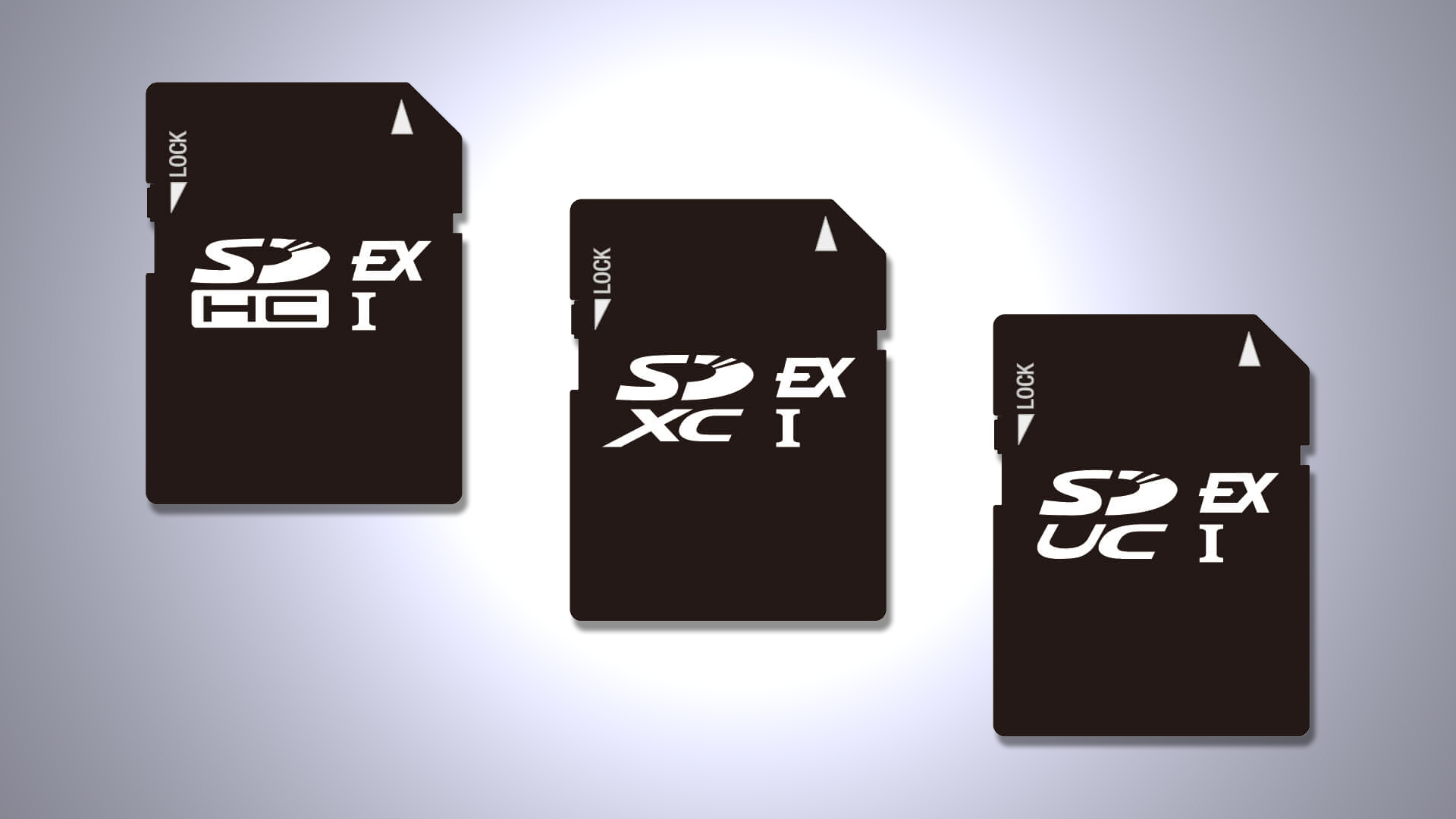

SD cards are often seen as the 'low cost' non professional storage solution. It's not really a fair description, and the latest SD Express development means that cards will soon be capable of blazing speeds.
Anyone who can remember the dawn of electronic cinema will remember the fridge-sized hard disks it took to record uncompressed HD-resolution material from cameras like the Thomson Viper. Now, the average cellphone has probably got fast enough (if not big enough) storage to do that and the world’s most petite flashcard format is about to be expanded to go even further because the SD Card Association has just put out a white paper on SD Expresson SD Express. This was in development through the latter half of 2018, but the arrival of the white paper and some reliable figures seemed a good time to talk about it.
SD Express promises to bring a huge amount of performance to something that has sometimes been viewed as the cost-conscious option, though that’s not entirely fair. Current SDXC UHS-II cards with V90 class ratings can sometimes achieve over 250MB/s writes which is enough for even quite demanding modern video formats. SDXC UHS-II V90 cards are not particularly cheap, being cost comparable to CFast cards, but they exist. On paper, there’s not even much of an offset in theoretical performance, at least if we compare with the very fastest existing SD formats. CFast 2.0 uses SATA 3.0 as its interface standard which can achieve 600MB/s on paper; a UHS-III SD card can theoretically achieve up to 624MB/s – if anyone can actually find a UHS-III SD card.
Chip limitations
Both will be limited by the performance of the flash memory chips that actually do the storage, which seems to make more difference. CFast is physically larger, which may have something to do with the fact that it has generally been faster. So far, the fastest CFast achieves about 525MB/s, whereas, as we’ve seen, SD has been stuck at around half that. More commonly, an average 128GB CFast card may be twice as fast as run-of-the-mill SD cards, though the lowest-cost CFast options are unlikely to achieve that 525MB/s peak.
In the context of all this, the new SD Express format fundamentally describes a new, faster way for the card to talk to the computer. SD Express implements the NVMe interface that’s already used by flash storage devices designed to be permanently installed inside a computer. That means that the communication channel between the card and the computer is PCIe, the same as the multichannel expansion card slots that appear in most PCs, which is very fast. How fast? On paper, the theoretical performance is a shade less than a gigabyte per second, though in common with other SD cards, SD Express cards will also have the ability to operate at lower speeds in less-capable slots.
There is a small penalty in that SD Express cards do not support the UHS-II version of the standard, which means that in UHS-II and UHS-III readers, they’ll be limited to speeds of around 100MB/s, but that’s reasonable. Including SD Express, there are now five card types to follow up and that’s potentially a lot of code to maintain to make a single card work a bit faster. They’ll work in any SD slot, just perhaps not as fast as we’d like. Owners of cameras that take UHS-II or III cards might need to bear that in mind in case of accidentally purchasing an SD Express card.
The confusion of types is something the SD people are clearly aware of, although their solution (perhaps the only solution) is to produce yet another set of hieroglyphs that try to identify all the options and sub-options that exist. There are now a lot of these and anyone would be forgiven for pulling out a cellphone to look up a decryption matrix for the phrase “SD XC V60 II UHS-II”. Most cards have taken to including claimed read and write rates in the markings.
It remains to be seen what these blindingly fast, incredibly tiny cards might actually be used for; a gigabyte per second is significantly in excess of what most consumer devices might need, although, over time, it would be great to see devices such as cellphones start to realise that, yes, we can record things at faster than 10Mbps. Although it seems more likely that the same designers might also think, well, we can record for longer.
Still, fast is good.
Tags: Production


Comments